This year has been one we won’t soon forget. Every day seemed to bring another breaking news story, and the pandemic has kept us away from our friends, our families, and our coworkers.
Still, there has been much accomplished in 2020, and we at the Bucknell University Press have been busy continuing to publish scholarly monographs in a variety of fields. At times like this, thoughtful intellectualism and academic accomplishment are as important as ever, and we are proud to be able to bring our readers the works of fine authors the world over.
This December, we wanted to take a look back at the books published over the course of 2020. Check out the full, chronological list below, and click on any book’s title to be taken to our website where you can find out more information and order a copy.
1.) 1650-1850: Ideas, Aesthetics, and Inquiries in the Early Modern Era (Volume 25)
Edited by Kevin L. Cope
Volume 25 of 1650–1850: Ideas, Aesthetics, and Inquiries in the Early Modern Era investigates the local textures that make up the whole cloth of the Enlightenment. Unfurling in the folds of this volume is a special feature on playwright, critic, and literary theorist John Dennis. This celebration of Dennis mingles with a full company of a wide array of essays in the character of revealing case studies and tops it all off with a full portfolio of relevant reviews.
2.) The Novel Stage: Narrative Form from the Restoration to Jane Austen
By Marcie Frank
Drawing on media theory and focusing on the less-examined narrative contributions of such authors as Aphra Behn, Frances Burney, and Elizabeth Inchbald, alongside those of Samuel Richardson, Henry Fielding, and Jane Austen, Marcie Frank’s The Novel Stage tells the story of the novel as it was shaped by the stage.
3.) Beside the Bard: Scottish Lowland Poetry in the Age of Burns
By George S. Christian
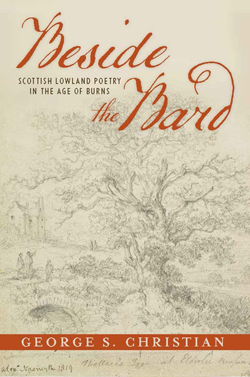
Beside the Bard argues that “Scotland” is a revolutionary category, always subject to creative destruction and reformation. Scottish poetry in the age of Burns reclaims not a single past, dominated and overwritten by the unitary national language of an elite ruling class, but a past that conceptualizes the Scottish nation in terms of local self-identification, linguistic multiplicity, cultural and religious difference, and transnational political and cultural affiliations.
4.) The Life and Strange Surprizing Adventures of Robinson Crusoe: The Stoke Newington Edition
By Daniel Defoe, edited by Maximillian E. Novak, Irving N. Rothman, and Manuel Schonhorn
Robinson Crusoe has been an international best-seller for three hundred years. An adventure tale involving cannibals, pirates, and shipwrecks, it embodies economic, social, political, and philosophical themes that continue to be relevant today. This edition of the novel with its introduction, line notes, and full bibliographical notes provides a uniquely scholarly presentation. There has been no other edition like it.
5.) Romantic Automata: Exhibitions, Figures, Organisms
Edited by Michael Demson and Christopher R. Clason
For most of the eighteenth century, automata were deemed a celebration of human ingenuity, but among the Romantics, they prompted a contradictory apprehension about mechanization and contrivance: such science and engineering threatened the spiritual nature of life. The contributors to Romantic Automata open new methodological approaches to understanding human interaction with technology that strives to simulate, supplement, or supplant organic life.
6.) Lothario’s Corpse: Libertine Drama and the Long-Running Restoration, 1700-1831
By Daniel Gustafson
Lothario’s Corpse unearths a performance history, on and off the stage, of Restoration libertine drama in Britain’s eighteenth and early nineteenth centuries. Weaving together readings of a set of literary texts, theater anecdotes, political writings, and performances, Gustafson illustrates how the corpse of the Restoration stage libertine is revived in the period’s debates about liberty, sovereign desire, and the subject’s relation to modern forms of social control.
7.) Transpoetic Exchange: Haroldo de Campos, Octavio Paz, and Other Multiversal Dialogues
Edited by Marília Librandi, Jamile Pinheiro Dias, and Tom Winterbottom
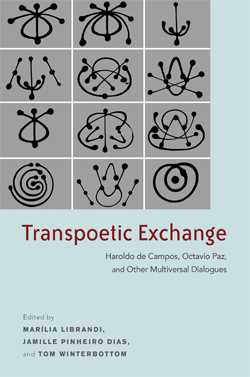
Transpoetic Exchange illuminates the poetic interactions between Octavio Paz and Haroldo de Campos from three perspectives—comparative, theoretical, and performative. Both poets signal the direction of poetry as that of translation, understood as the embodiment of otherness and of a poetic tradition that every new poem brings back as a Babel re-enacted.
8.) Between Market and Myth: The Spanish Artist Novel in the Post-Transition, 1992-2014
By Katie J. Vater
In Between Market and Myth, Vater studies select authors whose largely realist novels portray a clash between the myth of artistic freedom and artists’ willing recruitment or cooptation by market forces or political influence. Today, in an era of rising globalization, the artist novel proves ideal for examining authors’ ambivalent notions of creative practice when political patronage and private sector investment complicate belief in artistic autonomy.
9.) Narrative Mourning: Death and Its Relics in the Eighteenth-Century British Novel
By Kathleen M. Oliver
Narrative Mourning explores death and its relics as they appear within the confines of the eighteenth-century British novel. It argues that the cultural disappearance of the dead/dying body and the introduction of consciousness as humanity’s newfound soul found expression in fictional representations of the relic (object) or relict (person).
10.) Play in the Age of Goethe: Theories, Narratives, and Practices of Play around 1800
Edited by Edgar Landgraf and Elliott Schreiber
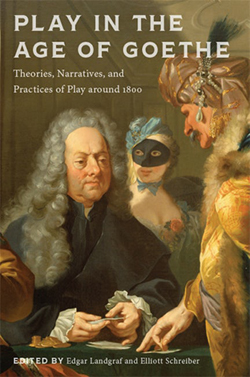
We are inundated with game play today. Digital devices offer opportunities to play almost anywhere and anytime. No matter our age, gender, social, cultural, or educational background—we play. Play in the Age of Goethe: Theories, Narratives, and Practices of Play around 1800 is the first book-length work to explore how the modern discourse of play was first shaped during this pivotal period (approximately 1770-1830).
11.) Rewriting Crusoe: The Robinsonade across Languages, Cultures, and Media
Edited by Jakub Lipski
Published in 1719, Defoe’s Robinson Crusoe is one of those extraordinary literary works whose importance lies not only in the text itself but in its persistently lively afterlife. German author Johann Gottfried Schnabel—who in 1731 penned his own island narrative—coined the term “Robinsonade” to characterize the genre bred by this classic, and today hundreds of examples can be identified worldwide. The essays here convince us that the genre’s formal and ideological adaptability to changing social and cultural circumstances explains its enduring relevance to this day.
12.) Writing Lives in the Eighteenth Century
Edited by Tanya M. Caldwell
Writing Lives in the Eighteenth Century is a collection of essays on memoir, biography, and autobiography during a formative period for the genre. The essays revolve around recognized male and female figures—returning to the Boswell and Burney circle—but present arguments that dismantle traditional privileging of biographical modes.
13.) Mormons in Paris: Polygamy on the French Stage, 1874-1892
Edited and translated by Corry Cropper and Christopher M. Flood
In the late nineteenth century, numerous French plays, novels, cartoons, and works of art focused on Mormons. Unlike American authors who portrayed Mormons as malevolent “others,” however, French dramatists used Mormonism to point out hypocrisy in their own culture. This new critical edition presents translations of four musical comedies staged or published in France in the late 1800s.
14.) Johnson in Japan
Edited by Kimiyo Ogawa and Mika Suzuki
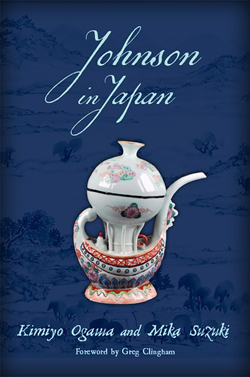
The study and reception of Samuel Johnson’s work has long been embedded in Japanese literary culture. The essays in this collection reflect that history and influence, underscoring the richness of Johnson scholarship in Japan, while exploring broader conditions in Japanese academia today.
15.) Paper, Ink, and Achievement: Gabriel Hornstein and the Revival of Eighteenth-Century Scholarship
Edited by Kevin L. Cope and Cedric D. Reverand II
During his forty-two years as president of AMS Press, Gabriel Hornstein quietly sponsored and stimulated the revival of “long” eighteenth-century studies. Whether by reanimating long-running research publications; by creating scholarly journals; or by converting daring ideas into lauded books, “Gabe” initiated a golden age of Enlightenment scholarship. Paper, Ink, and Achievement finds in the career of this impresario a vantage point on the modern study of the Enlightenment.
16.) Writing Home: A Quaker Immigrant on the Ohio Frontier; the Letters of Emma Botham Alderson
Edited by Donald Ingram Ulin
Writing Home offers readers a firsthand account of the life of Emma Alderson, an otherwise unexceptional English immigrant on the Ohio frontier in mid-nineteenth-century America, who documented the five years preceding her death with astonishing detail and insight. Writing Home offers an unparalleled opportunity for studying immigrant correspondence due to Alderson’s unusually well-documented literary and religious affiliations.
17.) Challenging the Black Atlantic: The New World Novels of Zapata Olivella and Gonçalves
By John T. Maddox IV
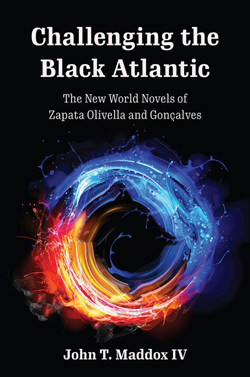
This incisive new study demonstrates how Columbian writer Manuel Zapata Olivella’s novel Changó el gran putas (1983) and Brazilian-born Ana Maria Gonçalves’ saga Um defeito de cor (2006) transcend Paul Gilroy’s paradigm of the Black Atlantic to show revolutions, communities, and femininities that prophesy a just “New World.”
18.) Indiscreet Fantasies: Iberian Queer Cinema
Edited by Andrés Lema-Hincapié and Conxita Domènech
Offering in-depth analyses of fifteen different queer films from the Iberian Peninsula, this collection shows how a diverse group of filmmakers from regions including Catalonia, Portugal, Castile, Galicia, and the Basque Country have produced films that challenge the region’s conservative religious values and gender norms, while intervening in vital debates about politics, history, and nation.
19.) Association and Enlightenment: Scottish Clubs and Societies, 1700-1830
Edited by Mark C. Wallace and Jane Rendall
Social clubs as they existed in eighteenth- and early nineteenth-century Scotland were varied: they could be convivial, sporting, or scholarly, or they could be a significant and dynamic social force, committed to improvement and national regeneration as well as to sociability. The essays in this volume—the first full-length study of the subject in fifty years—examine the complex history of clubs and societies in Scotland from 1700 to 1830.
20.) Oriental Networks: Culture, Commerce, and Communication in the Long Eighteenth Century
Edited by Bärbel Czennia and Greg Clingham
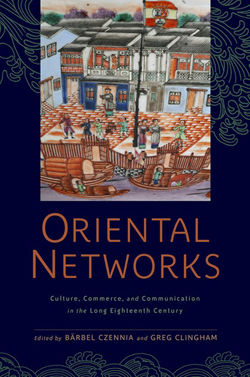
Oriental Networks explores forms of interconnectedness between Western and Eastern hemispheres during the long eighteenth century, a period of improving transportation technology, expansion of intercultural contacts, and the emergence of a global economy. In doing so the volume contributes to the increasingly global understanding of culture and communication.
Edited by Kevin L. Cope
Nowhere is distance so near-at-hand as in Enlightenment culture. Whether in the telescopic surveys of early astronomers, the panoramas of painters, the diaries of travelers, the prospects of landscape architects, or the tales of novelists, distance is never far in the background of the works and deeds of long-eighteenth-century artists, authors, and adventurers. Hemispheres and Stratospheres draws that background into the foreground.